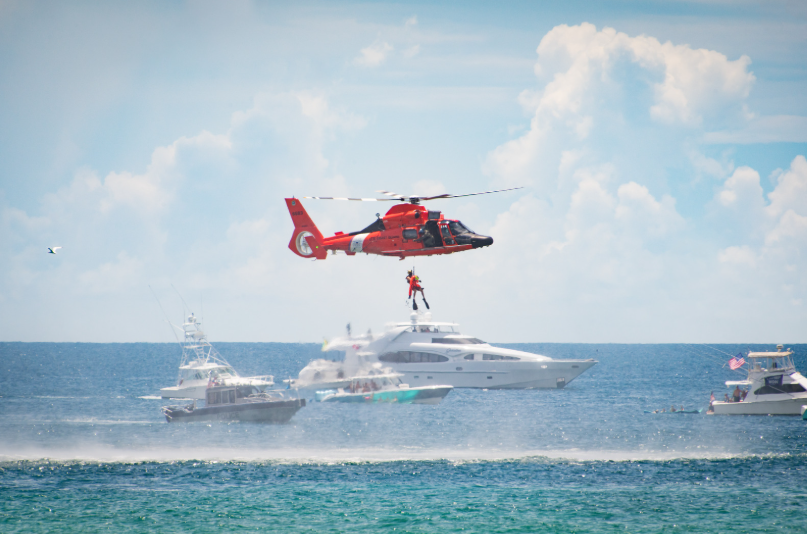Joining the United States Coast Guard is a big step. It’s not just about signing up; it’s about preparing yourself for an experience that will challenge you in many ways. One of the first things you’ll encounter is basic training. If you’ve ever wondered, “How long is US Coast Guard basic training?” let me walk you through it.
What Is US Coast Guard Basic Training?
US Coast Guard basic training, often called “boot camp,” is the first and most essential step in becoming a Coast Guardsman. It’s where you learn the skills, discipline, and teamwork required to serve. Basic training is designed to test your limits while preparing you mentally, physically, and emotionally for life in the Coast Guard.
How Long Is US Coast Guard Basic Training?
The basic training program lasts for eight weeks. During this time, recruits undergo rigorous training at the Coast Guard Training Center in Cape May, New Jersey. While eight weeks might seem short compared to some other military branches, every moment is packed with activities, lessons, and challenges to shape you into a capable and confident Coast Guardsman.
A Week-by-Week Breakdown of Coast Guard Basic Training

Week 1: Arrival and Adjustment
Your journey begins the moment you step off the bus in Cape May. The first week is all about adjusting to the strict discipline and structured environment. You’ll receive your uniforms, get your haircut, and undergo medical and fitness assessments. Expect a lot of yelling from instructors as they set the tone for what’s to come. It’s tough, but it’s also the start of something transformative.
Week 2: Learning the Basics
In the second week, you’ll dive into basic Coast Guard knowledge. This includes learning about ranks, military courtesies, and the history of the Coast Guard. Physical training (PT) becomes a daily routine, and you’ll start marching drills. This week lays the foundation for the discipline and teamwork required in the weeks ahead.
Week 3: Water Survival and Rescue
The Coast Guard is all about protecting lives at sea, so water survival skills are crucial. In week three, you’ll learn to swim, tread water, and handle emergency situations in aquatic environments. If you’re not a strong swimmer, don’t worry—you’ll get plenty of practice.
Week 4: Firefighting and Damage Control
This week is all about safety and survival techniques. You’ll learn to fight fires, handle hazardous materials, and control shipboard damage. The hands-on training is intense but rewarding, giving you the skills to stay calm under pressure.
Week 5: Search and Rescue (SAR) Training
Search and rescue is a big part of what the Coast Guard does. This week focuses on SAR techniques, teamwork, and leadership. You’ll practice scenarios that mimic real-life rescue operations, helping you understand the importance of quick thinking and cooperation.
Week 6: Advanced Drills and Skills
By this point, you’ll be more confident and physically stronger. Week six introduces advanced drills, including navigation and seamanship. You’ll also continue physical and academic training to ensure you’re well-rounded and prepared for Coast Guard duties.
Week 7: Preparation for Graduation
Week seven is about refining everything you’ve learned. You’ll undergo final evaluations in physical fitness, academics, and practical skills. This is your chance to prove you’re ready to graduate and take on the responsibilities of a Coast Guardsman.
Week 8: Graduation
The final week is a mix of emotions. You’ll participate in graduation rehearsals and prepare to take your oath. Graduation day is a proud moment for recruits and their families. It’s the day you officially become a member of the United States Coast Guard.
What to Expect During Basic Training
Basic training is demanding but manageable if you’re prepared. Expect early mornings, long days, and constant challenges. Physical fitness is a major focus, so make sure you’re in shape before arriving. Mental toughness is just as important as physical strength. You’ll need to stay motivated, even when things get tough.
How to Prepare for Coast Guard Basic Training
- Get Physically Fit: Start running, swimming, and doing bodyweight exercises like push-ups and sit-ups. The fitter you are, the easier PT will be.
- Study Coast Guard Basics: Familiarize yourself with ranks, terminology, and the Coast Guard’s mission.
- Pack Smart: Bring only what’s allowed, like personal hygiene items and essential documents.
- Stay Positive: A positive attitude can make a huge difference during challenging moments.
Life After Basic Training
After graduating, you’ll move on to your first assignment or additional specialized training, depending on your role. Life in the Coast Guard is diverse and rewarding, with opportunities to serve at sea, on shore, or in the air. Basic training is just the beginning of an exciting journey.
FAQs About Coast Guard Basic Training
How long is US Coast Guard basic training?
Basic training is eight weeks long, held at Cape May, New Jersey.
Can I fail Coast Guard basic training?
Yes, recruits can fail due to physical fitness issues, disciplinary problems, or inability to meet training standards. However, support is available to help you succeed.
Do I get paid during basic training?
Yes, recruits are paid as E-1 (Seaman Recruit) during basic training. Pay starts as soon as you arrive.
Can I bring my phone to Coast Guard basic training?
Phones are not allowed during training. You’ll have limited opportunities to communicate with family through letters.
What happens if I’m not a strong swimmer?
Recruits are taught swimming skills during training. If you’re not confident in the water, instructors will help you improve.
What should I pack for basic training?
You’ll receive a list of approved items, including personal hygiene products, a few changes of clothing, and essential documents. Avoid bringing extra items.
To Sum Up
US Coast Guard basic training lasts eight weeks, offering a challenging but life-changing experience. It’s where recruits transform into Coast Guardsmen, ready to serve their country with pride. If you’re considering this path, prepare well and embrace the journey ahead.